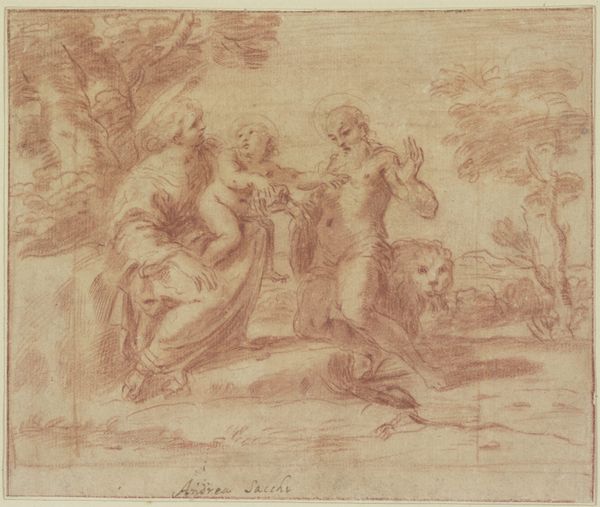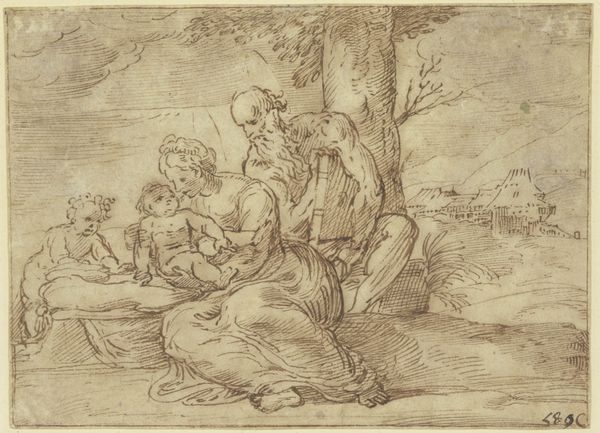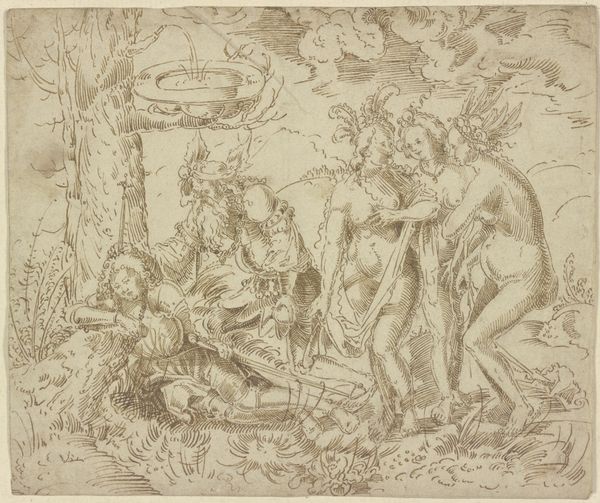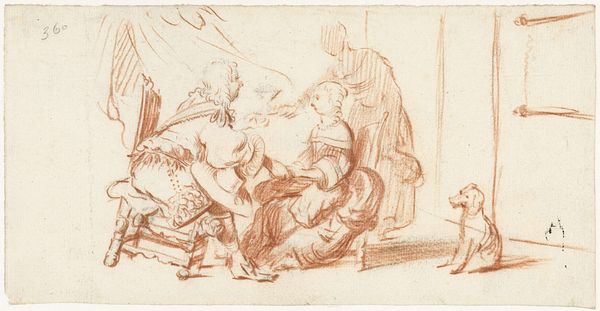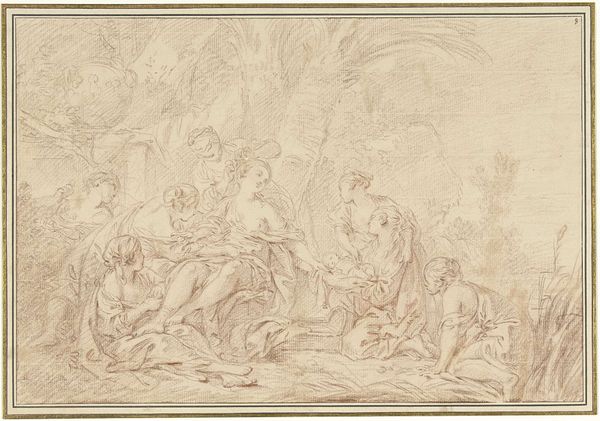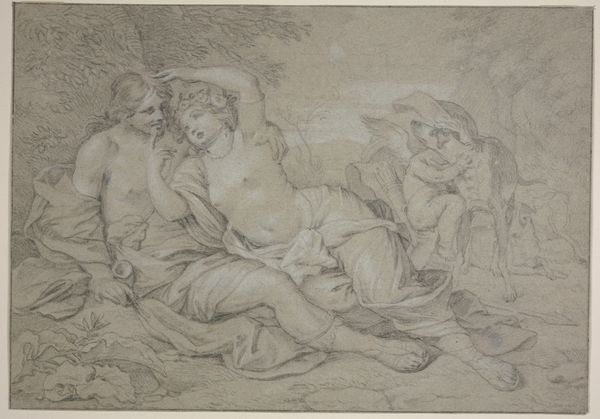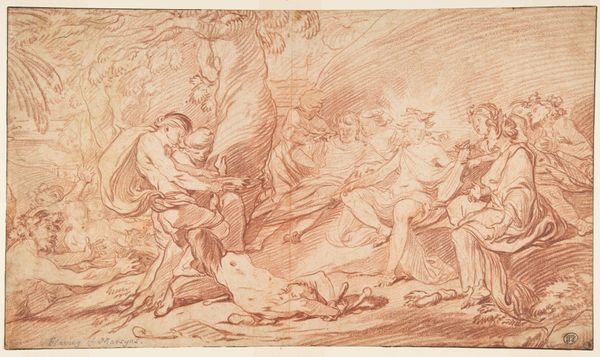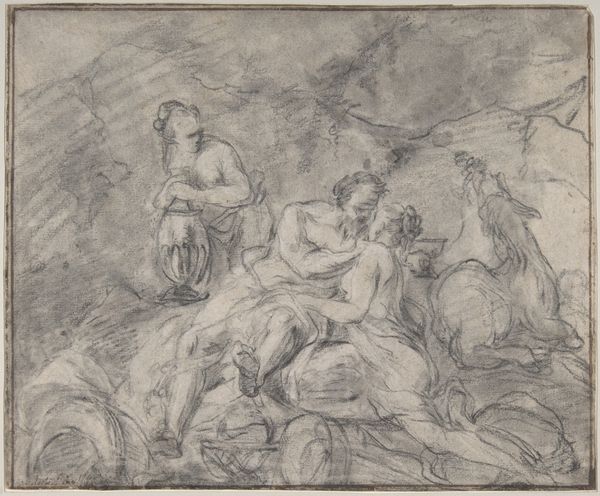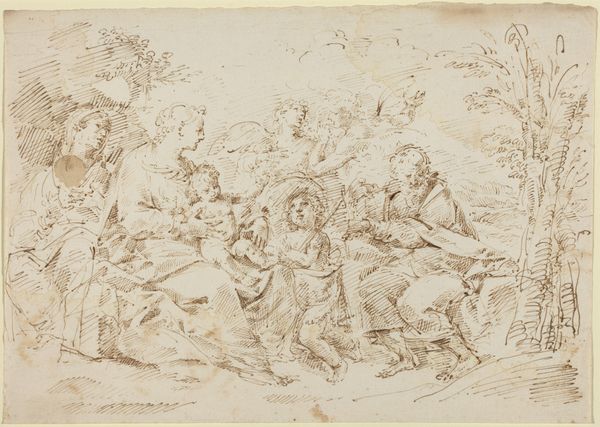
drawing, dry-media
#
drawing
#
dutch-golden-age
#
landscape
#
figuration
#
dry-media
#
genre-painting
Dimensions: height 144 mm, width 203 mm
Copyright: Rijks Museum: Open Domain
Curator: Here we see a dry-media drawing from the Dutch Golden Age titled "Drie kinderen in een landschap," or "Three Children in a Landscape." It is attributed to Caspar Netscher, dating sometime between 1649 and 1684. Editor: Immediately, the sepia tones create this feeling of nostalgia, or perhaps more accurately, distance. The way the children are positioned feels very studied, almost staged, as if they’re enacting some ritual lost to us. Curator: The composition certainly evokes a particular mood, doesn't it? It reminds me of allegorical traditions depicting innocence and the passage of time. The figures and their poses hint at the genre paintings typical of this period, portraying everyday life scenes but often loaded with deeper meaning. Editor: It is also impossible for me to ignore the gendered nature of these images, and particularly, how this staged innocence historically places them within systems of patriarchal constraint and sexual objectification. I find it deeply unsettling. Curator: I understand your point; that reading is important. We must also consider that images of children during this era were also reflections of broader societal values around family, education, and the perceived purity of youth. Netscher might have used his skill to translate these ideas into a visual language, appealing to contemporary audiences through known and valued archetypes. Editor: But isn’t that precisely the problem? To normalize an ideal is to implicitly impose it upon lived realities and expectations. Here, the performance of innocence naturalizes what would become the foundation for deeply problematic societal constructs about gender, expectations, and performance. Curator: Indeed, a cultural lens is vital in evaluating artwork and assessing its broader impact. These depictions hold a mirror up to societal ideals, beliefs, and inherent challenges from centuries ago. Ultimately, artworks, as powerful conveyors of cultural information, invite us to evaluate our own interpretations in this continuum. Editor: Yes, the work here remains resonant. We carry the emotional weight and social consequences that unfold over time through the image.
Comments
No comments
Be the first to comment and join the conversation on the ultimate creative platform.
